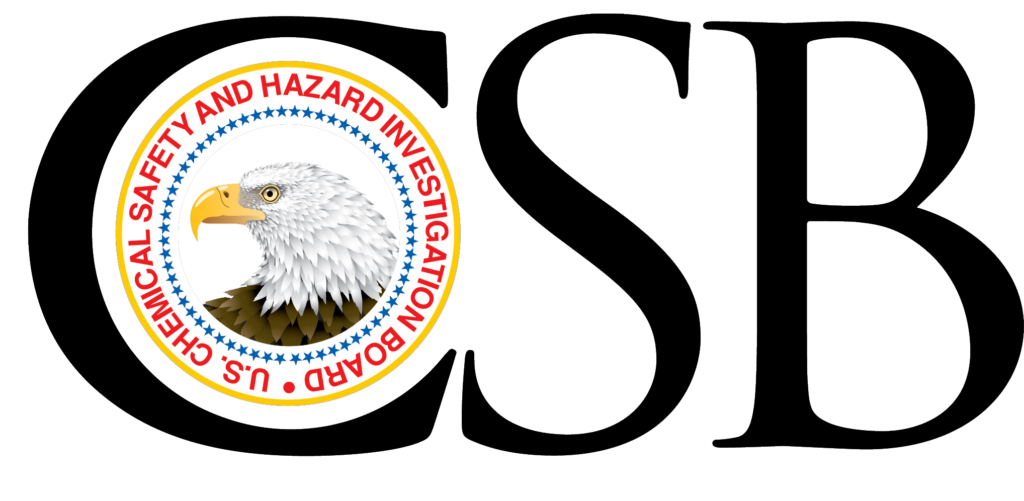
Let us help you make sense of PSM / RMP!
We’ll be having an open-enrollment PSM class in Burleson, Texas July 8th-11th 2025.
You can get more information on the class with this link.
We hope to see you there!
Chill - We Got This!

Let us help you make sense of PSM / RMP!
We’ll be having an open-enrollment PSM class in Burleson, Texas July 8th-11th 2025.
You can get more information on the class with this link.
We hope to see you there!
The EPA has made a relatively small update to the process of submitting, updating, or correcting your RMP filing. The change is minor, but if not accounted for, it can slow down or stop your filing process.
What Changed?
It has always been a requirement for the Certifier (and Preparers) to have profiles established through the CDX portal, but the identity proofing and CDX Electronic Signature Agreement (ESA) components are new.
It’s possible that this identity proofing and signature agreement are already taken care of, but it would still be prudent to ensure your Certifier has met these requirements several weeks before your RMP submittal/update are due.
Who is Affected?
The Certifying Official for your process’s RMP filing is the only one affected. The EPA defines these people as:
“Certifiers are facility owners or operators who must certify the accuracy and completeness of the information reported in the RMP. They have signed and submitted a one-time Electronic Signature Agreement (ESA) to the EPA. The ESA legally binds the Certifier’s electronic submission to their signature. Only Certifiers can submit the RMP.”
This is usually a plant manager, owner, or some other member of upper management. In order to be respectful of their time, it would be good to let them work through these new requirements well before the filing is due.
If you believe that your Certifier has already met these requirements, here is what the EPA’s guidance suggests to verify:
”Some existing users may not be impacted if they previously completed identity proofing and signed a standard CDX ESA for another program service that uses the same CDX organization as their RMP*eSubmit Certifying Official role.
…
Existing Users who Registered Before February 24, 2023
Existing users who have not verified their identity or without a standard CDX ESA will be prompted to complete identity verification and ESA when they access the RMP*eSubmit for the first time. The one-time process can be initiated by logging into CDX and clicking on the “Certify Submission” role link. Users will be able to complete this process using one of the below methods:
Once the above electronic or paper process is complete, you will be able to access RMP*eSubmit.”
The EPA’s RMP eSubmit User Manual has more information, and detailed step-by-step instructions for any CDX portal or RMP filing questions you may have. (Link functional as of June, 2023)
As always, we will continue to track any changes we can find concerning Ammonia Refrigeration process safety. Any changes or updates will be posted here and accounted for in the OSPSM compliance templates. If you have questions or would like to find out more, please contact the RC&E Safety and Compliance team (safety@rce-nh3.com).
Looks like the Biden administration is going to continue the recent streak of attempting to change the EPA RMP rules that was started in the Obama administration.
On August 18, 2022, EPA Administrator Michael S. Regan signed the Safer Communities by Chemical Accident Prevention (SCCAP) rule, which proposes revisions to the Risk Management Program (RMP) to further protect vulnerable communities from chemical accidents, especially those living near facilities with high accident rates. The proposed rule would strengthen the existing program and includes new safeguards that have not been addressed in prior RMP rules. Some of the proposed requirements include identifying safer technologies and chemical alternatives, more thorough incident investigations, and third-party auditing, all of which should benefit nearby communities. When finalized, the rule is expected to make communities safer by reducing the frequency of chemical releases and their adverse effects.
The public may comment on the SCCAP proposed rule at www.regulations.govEXIT EPA WEBSITE (Docket ID No.: EPA-HQ-OLEM-2022-0174) until 60 days after publication in the Federal Register.
The whole country is facing a very difficult situation right now as we all deal with both the COVID-19 disease and the effects of government’s response to it. Some customers (especially restaurant service) are seeing a 2/3rds drop in their business. Other sectors, such as Grocery, are seeing unprecedented demand. Either way, that’s a recipe for chaos.
One of the first cultural victims of chaos is usually the safety / regulatory community. We’re easy to ignore whether the reason is “we’re facing layoffs and bankruptcy” or “orders are up 300% and we don’t have time for this.”
On top of that, in a good-faith effort to re-assure the regulated community that they understand the burdens we’re under right now, the EPA drafted a policy saying they would use discretion on compliance during the pandemic.
That EPA policy was interpreted by some (the environmental lobby mostly) as a blanket waiver of all regulations allowing the regulated community to pollute at will. More significantly worrying to me personally was the calls, emails & texts I started getting Friday where people in our refrigeration community were being “told” this temporary EPA policy was being used to avoid compliance with their PSM / RMP obligations.
With that in mind, let’s look at what it actually says, shall we?
What is the EPA actually saying?
Here’s the actual EPA press release. Here’s the actual EPA guidance memorandum. Here’s the important part:
- Entities should make every effort to comply with their environmental compliance obligations.
- If compliance is not reasonably practicable, facilities with environmental compliance obligations should:
- Act responsibly under the circumstances in order to minimize the effects and duration of any noncompliance caused by COVID-19;
- Identify the specific nature and dates of the noncompliance;
- Identify how COVID-19 was the cause of the noncompliance, and the decisions and actions taken in response, including best efforts to comply and steps taken to come into compliance at the earliest opportunity;
- Return to compliance as soon as possible; and
- Document the information, action, or condition specified in a. through d
The consequences of the pandemic may constrain the ability of regulated entities to perform routine compliance monitoring, integrity testing, sampling, laboratory analysis, training, and reporting or certification. … In general, the EPA does not expect to seek penalties for violations of routine compliance monitoring, integrity testing, sampling, laboratory analysis, training, and reporting or certification obligations in situations where the EPA agrees that COVID-19 was the cause of the noncompliance and the entity provides supporting documentation to the EPA upon request.
What does that mean for us in PSM/RMP covered processes?
Short answer: Not a lot. Long answer follows…
Here’s some examples of what it might let you avoid a fine for:
Here’s some examples of what it definitely WILL NOT let you avoid a fine for:
Accidental Releases: Nothing in this temporary policy relieves any entity from the responsibility to prevent, respond to, or report accidental releases of oil, hazardous substances, hazardous chemicals, hazardous waste, and other pollutants, as required by federal law, or should be read as a willingness to exercise enforcement discretion in the wake of such a release.
Closing thoughts
Unless you are in a very unique position, this EPA memo means very little to you at all. Here’s examples of two clients that it does affect:

“U.S. Chemical Safety Board and Hazard Investigation Board (CSB) has approved a final rule on accidental release reporting. The CSB has posted a prepublication version of the final rule… The official version should be published early next week in the Federal Register.
The rule requires prompt reports to the CSB from owners or operators of facilities that experience an accidental release of a regulated substance or extremely hazardous that results in a death, serious injury or substantial property damage. The CSB anticipates that these reports will provide the agency with key information important to the CSB in making prompt deployment decisions…
The rule is required by the CSB’s enabling legislation but was not issued during the first 20 years of CSB operations. Last year, a court ordered the CSB to finalize a rule within a year. “
What it means: If the incident resulted in Death, Serious Injury or Substantial Property Damage ($1kk or more) then you have to report the incident to the CSB (via phone 202- 261-7600 or email report@csb.gov) within 30 minutes. The report must include:
1604.4 Information required in an accidental release report submitted to the CSB
1604.4 The report required under §1604.3(c) must include the following information regarding an accidental release as applicable:
1604.4(a) The name of, and contact information for, the owner/operator;
1604.4(b) The name of, and contact information for, the person making the report;
1604.4(c) The location information and facility identifier;
1604.4(d) The approximate time of the accidental release;
1604.4(e) A brief description of the accidental release;
1604.4(f) An indication whether one or more of the following has occurred: (1) fire; (2) explosion; (3) death; (4) serious injury; or (5) property damage.
1604.4(g) The name of the material(s) involved in the accidental release, the Chemical Abstract Service (CAS) number(s), or other appropriate identifiers;
1604.4(h) If known, the amount of the release;
1604.4(i) If known, the number of fatalities;
1604.4(j) If known, the number of serious injuries;
1604.4(k) Estimated property damage at or outside the stationary source;
1604.4(l) Whether the accidental release has resulted in an evacuation order impacting members of the general public and others, and, if known:
1604.4(l)(1) the number of persons evacuated;
1604.4(l)(2) approximate radius of the evacuation zone;
1604.4(l)(3) the type of person subject to the evacuation order (i.e., employees, members of the general public, or both).
The good news is that if you have to report the incident to the NRC then you can skip reporting all the above data and simply report the NRC case number you’re given during the NRC call.
This new requirement takes effect 30 days from the posting in the Federal Register so ACT NOW. It’s important that you update your program because there are enforcement penalties associated with not following this new rule…
1604.5(b) Violation of this part is subject to enforcement pursuant to the authorities of 42 U.S.C. 7413 and 42 U.S.C. 7414, which may include
1604.5(b)(1) Administrative penalties;
1604.5(b)(2) Civil action; or
1604.5(b)(3) Criminal action.
What should I do?
If you use the template program, the hard work has already been done FOR YOU. Just open up the template directory on Google Drive and follow these steps for your program:
Note: If you have instructions for Agency Notifications somewhere outside your Incident Investigation plan, you’ll need to update them to include the CSB contact information there too. Feel free to use the text in the Incident Investigation element Written Plan, Implementation Policy: Agency Notifications.

The story so far…
Dec 2016: Outgoing Obama EPA releases changes to the RMP rule on the way out the door.
Apr 2017: Incoming Trump EPA puts the RMP rule changes on hold.
Jun 2017: Trump EPA further delays the RMP rule changes.
May 2018: Trump EPA proposes new RMP rule changes, reversing Obama changes.
Aug 2018: DC District Court reverses Trump Rule and re-instates Obama rule essentially making it the existing rule with compliance dates in the past. Trump EPA is basically told that it can change the rules, but it needs to follow different procedures to do that. Trump admin appeals and the rule changes are put on hold.
Sep 2018: Trump admin loses appeals. Obama RMP rule changes are officially LIVE. Trump EPA announces that they will follow the different procedures and change the rule the right way. (Not-so-secretly, the entire EPA is told NOT to enforce the new rule, but out of an abundance of caution, most RMP adherents implement the changes anyway. After all, it IS the law.)
Dec 2019: Trump EPA officially posts the new rule and places it in the CFR making it LIVE on 12/19/19. (See links at the end of the post)
So, where do we stand now?
Ok, we’ve got a new RMP rule. It appears to have gone through the correct rulemaking process. It’s been published in the Federal Register making it the law of the land.
So, what do we do now?
Well, let’s be honest; the Trump administration IS GOING TO GET SUED over this. What happens then? Who knows!? If you follow the courts in modern America, you know there is very little that can be accurately forecasted.
What we do know is that we have a new rule. The new rule appears to have been done correctly with sound documentation as to the reasoning for the changes. In my opinion, the new rule will LIKELY hold up in court. Even if it doesn’t, it is highly unlikely the EPA could get away with fining / citing people for not following a court-reinstated rule under such a cloud of confusion.
In any case, the new rule is easier to follow and makes more sense than the Obama EPA rule changes did. It reverts the majority of the RMP rule to match the PSM rule where they SHARE jurisdiction. The only substantive changes are to the EPA-specific areas where the EPA alone holds jurisdiction.
Ok, so how do I comply with this new rule?
If you do use our template system, I’ve got some good news for you! This is where using a set of open-sourced, professionally curated templates really shines. ALMOST ALL THE WORK has been done FOR YOU!
Note: Estimated time for the above is about 2-4 hours depend on how well you know your PSM/RMP program.
On the other hand, If you don’t use our template system, you’re going to have to re-create the work I’ve already done:
Note: Estimated time for the above is about 40-80 hours depend on how well you know your PSM/RMP program and the EPA RMP rule.
Template Program changes in detail
Please note, where not specifically shown below all affected Element Written Plans had their CFR section updated to the current 12/19/19 CFR.
| Element | What Changed | Changes to Program Templates |
| 01 – RMP |
|
|
| 02 – EP | N/A | None |
| 03 – PSI |
|
|
| 04 – PHA |
|
|
| 05 – SOP | N/A | None |
| 06 – OT |
|
|
| 07 – CQ | N/A | None |
| 08 – MI | No changes to RMP requirements |
|
| 09 – HW | N/A | None |
| 10 – MOC / PSSR | No changes to RMP requirements |
|
| 11 – II |
|
|
| 12 – EPR |
|
|
| 13 – CA |
|
|
| 14 – TS |
|
|
Item-by-Item changes:
EPA links for new information:

The view that PSM is a time-sink.
A common push-back from facilities that are covered under the OSHA PSM and EPA RMP regulations is the sheer amount of resources these programs require to successfully design, implement, and maintain.
One phrase, seared into my memory, is from a frustrated and over-burdened maintenance manager: “PSM is a thief!”
He was referring to the fact that he had to task high-performing, highly trained and highly compensated personnel to perform Process Safety tasks. Time spent on Process Safety is obviously time that isn’t spent elsewhere.
My counterpoint at the time was “Safety isn’t earned – it is rented. And the rent is due every damned day”
After an experience I had last week, I think there’s a better way to respond. I’d like to share my new response with you, but first let’s talk about the experience that made me see a new way of approaching this issue.
The experience
During the recent RETA conference the guest speaker was Jóse Matta. Jóse suffered ammonia burns over 40+ percent of his body when a condenser failed in an overpressure event. The event involved a portable ammonia refrigeration system. Before transport the system is drained of ammonia. In this incident, the driver placed a cap on the relief valve outlet due to DOT concerns. However, once the unit arrived onsite, the capped relief valve wasn’t noticed. Eventually this led to an overpressure event once the unit was charged and started.
Jose Matta barely survived his exposure. He nearly died in the hospital. His wife was brought into the burn unit to say her final goodbyes to her husband – the father of their children. When he was lucky enough to survive, he had to endure multiple surgeries. He no longer has a sense of smell and can barely taste food. He no longer has the ability to sweat and has to constantly monitor his condition when it’s hot out to avoid heat-stress or heat-stroke.
What does Jose’s experience have to do with “PSM as a thief?”
Post-incident, several failures of the PSM program were noted:
If the Process Safety items above were properly in place, the incident either wouldn’t have happened, or the outcome would have been significantly better for Jóse.
You see, when I pushed back from the “PSM is a Thief” argument before, I was wrong. I should have agreed with that statement.
PSM *is* a thief. Yes, it takes resources, but it can also take a LOT more from you!

PSM can steal from you: the opportunity to nearly die in a chemical release.
PSM can steal from your family: the opportunity for tearful goodbyes.
PSM can steal from you: years of surgeries, painful rehabilitation, and diminished health.
Yeah, PSM is a thief. I’m plenty happy to have these experiences stolen from me and the people I work with.
Without Process Safety, people are taking risks without knowing they are taking them. NOBODY should have to do that.
If you want your Process Safety program to steal these experiences from your facility, your coworkers, your neighbors, and YOU, we can help!
OSHA has posted a video on the “OSHA Inspection Process” to give you a general idea of what to expect during an OSHA inspection.
For my take on the subject, go to this earlier post.
If you need help preparing for, managing, or dealing with the aftermath of an OSHA or EPA inspection, please contact us.
Back in 2017 I posted on how to answer an OSHA document request from the published NEP.
OSHA’s published CPL-03-00-021 – “PSM Covered Chemical Facilities National Emphasis Program” includes an example document request list that often correlates fairly well to the one that OSHA inspectors provide during an NEP inspection.
Recently, a friend sent me the Document Request they received at the onset of the inspection which was quite a bit different from that PSM ChemNEP. Here’s what I noticed reviewing this new document:
I took that request and modified it to show how I would answer the 110 questions if you were using my PSM programs. You can download the 13 page, 4,500 word Microsoft Word monstrosity through the following link: 0419 OSHA Document Request.
Just a few general warnings about questions and document requests:
If you need help preparing for, managing, or dealing with the aftermath of an OSHA or EPA inspection, please contact us.
Note: See December 2019 Update.
Near the end of 2016, the Obama EPA published an updated RMP rule. It was officially entered into the CFR on January 13th, 2017. Since then, many things have happened:
After all that, the RMP rule as amended at the tail of the Obama administration is now surprisingly in effect, even though it is currently being replaced. That means every RMP facility in the country is suddenly out of compliance. This led the EPA to publish an un-signed, un-dated, Compliance Bulletin at the end of September, 2018.
Based on how we read it, that compliance bulletin essentially tells us that the EPA is DONE fighting the delay in the courts. They are going to implement and (to some degree) enforce the Obama-era rule and continue with their new rule-making process which should (eventually) reverse many of these changes.
In the interim, we are stuck with an updated, enforceable, RMP rule. This means that there are new/updated EPA RMP requirements that your program needs to be updated to address.
We have created two documents to assist you in making these changes:
Feel free to Contact Us via if you would like assistance from RC&E in updating your program.
Previous Coverage: